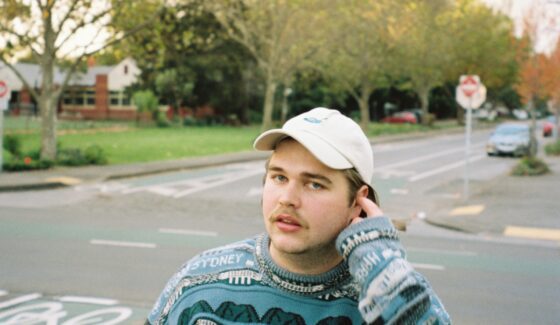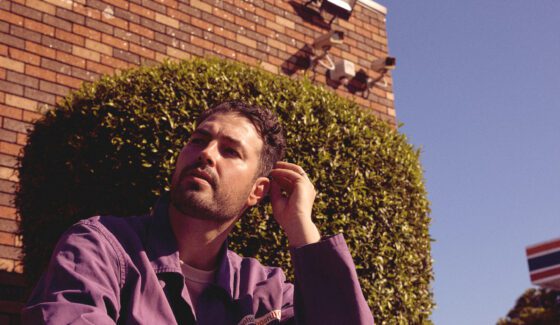Why Illicit Drug Use at Music Festivals Is a Red Herring

It seems as if every few months a new drug casualty is reported to the media, prompting a fevered outcry against recreational illicit drug use and the music festivals in which these deaths often take place. Most commonly, the finger is pointed at electronic dance events such as Stereosonic or the now abandoned Future Music Festival, where many attendees consider illicit drug use a prerequisite for attendance. The data reflects this too; 130 people were arrested at Brisbane’s most recent Stereosonic for drug offences, while earlier in 2015 60 punters were arrested at Future Music Festival.
Things were grimmer for the interstate legs of 2015’s Stereosonic tour; a 19-year-old man died in Adelaide and a 25-year-old woman died in Sydney. Both were reported to have consumed ‘Ecstasy’ tablets. This could mean any number of drugs were the cause of death, with most Ecstasy pills containing a combination of stimulants – sometimes a dangerous combination. However, illicit drugs may not have been the cause of death at all.
“While the illicit drugs may have had a minor impact on their deaths by possibly influencing the six to over-exert themselves, the doctor emphasised that illicit drugs were not the main cause.”
In 2014 six people were reported as dying from illicit drug overdoses at Malaysia’s Future Music Festival. This was later disproved by autopsy reports that showed the six people had actually died from heatstroke. The doctor who performed the autopsy even highlighted in his report that two out of the six heatstroke victims did not have illicit drugs in their system, and that the others only had minimal amounts. While the illicit drugs may have had a minor impact on their deaths by possibly influencing the six to over-exert themselves, the doctor emphasised that illicit drugs were not the main cause.
Although there is an undeniable illicit drug culture surrounding dance music, drug use does not simply only occur at electronic dance festivals and it would be unfair to use the music as a scapegoat for a much bigger issue. Just recently, a police operation in Sydney at the alternative music festival St Jerome’s Laneway Festival resulted in 40 punters being charged with drug offences. While this mostly involved more lightweight cannabis charges, it highlights the widespread popularity of illicit drugs at festivals and music events regardless of music genre. Indeed, the festival environment itself seems to practically necessitate the use of a chemical aid stronger than alcohol and cigarettes.
Of course, illicit drugs are not always predictable. While illicit drug causalities do eventuate even when the product consumed is exactly as described, it’s not always the drug itself that’s to blame. The environmental conditions of music festivals are often at the root of the problem, such as dehydration, sunstrokes, and over-heating in crowded areas. All of these factors are amplified to dangerous proportions when combined with illicit drugs, which increase your heart rate and dehydrate your body. But then, so does alcohol, which itself is sometimes the culprit behind festival deaths and hospitalisations. In fact, most music festival causalities were reported to have large amounts of alcohol in their system.
“Combine unsanitary shower conditions, lack of sleep, a diet that more often than not doesn’t hit the recommended two fruit and five veg, and a considerable amount of alcohol it’s no surprise that some punters turn to illicit drugs to rejuvenate themselves.”
We’re missing the bigger picture here by scapegoating illicit drug use, which is why the problem remains unsolved and the proposed solutions ineffective. With more people allegedly dying every year at festivals from illicit drug-related causes, it’s clear that the government’s tough love approach has seen few benefits. In particular, the costly presence of sniffer dogs at most major festivals has proven to be largely ineffective. A 2014 study done on sniffer dog searches in New South Wales showed a mere 2.4 per cent of searches led to successful prosecutions, with a massive 64 per cent of searches uncovering no illicit drugs at all.
Although some argue that neither alcohol nor illicit drugs should be a prerequisite for enjoyment at a music event where the music is supposed to be the primary entertainment, it is naïve to presume that punters will not seek out a way to relax and socialise. However, contrary to popular perception MDMA and Ecstasy are not the same drug. While MDMA refers to the main ingredient in Ecstasy pills, it is usually accompanied by other substances to enhance the effects, traditionally speed. These days it can include anything from DXM (the active ingredient in cough syrup), ketamine, and a host of unpredictable research chemicals with stimulant effects. While most punters hope for MDMA, it’s always a gamble unless you have a trusted source or a drug-testing kit at home. The safest bet would be that most Ecstasy pills contain undesirable contents.

Photo by Vice Australia
This was demonstrated in an article by Vice journalist Michael Segalov when took matters into his own hands and decided to test a number of ‘Ecstasy’ pills at the Isle of Wright Festival. The results were alarming; while one patron’s pill demonstrated the more benign contents of ‘Rennie’, a heartburn pill, others came up with more dangerous combinations such as DXM, which can lead to serotonin syndrome when combined with MDMA. The most worrying was a pill that showed low doses of PMA, more colloquially known as ‘Dr Death’ for the large number of casualties it has caused as MDMA’s cheaper evil twin. Vice Australia recently attempted the same thing at a local ‘Bush Doof’ where a number of pills came up as amphetamine-based, along with another tainted DXM pill. Even after being notified of the results, the owner of the contaminated DXM pill claimed he was still considering consuming the pill, but that he was a little ‘scared’ by the results – and rightfully so.
Rather than trying to impose ridiculous complications toward drug taking at a festival, an approach centred on tolerance and harm reduction might prove more successful. We don’t even need to brainstorm a solution! The longstanding success of pill testing booths at music festivals in European countries including Holland, Switzerland, Austria, Belgium, Germany, Spain, and France is enough of a reason to test it out in Australia. Even the ABC are taking heed and have recently aired a documentary on their popular program Four Corners, which provides a balanced overview of the issue, ending with the same conclusion that it’s time for law enforcement to accept defeat with its current Draconian tactics and trial pill testing at festivals.
“The most worrying was a pill that showed low doses of PMA, more colloquially known as ‘Dr Death’ for the large number of casualties it has caused as MDMA’s cheaper evil twin.”
When examining illicit drug use at festivals it becomes clear that their popularity stems from a wider array of issues, one of which is ironically tighter restrictions. These days only mid-strength drinks are allowed at most festivals and are marketed at ridiculous prices to dissuade binge drinking. These strict regulations have only worsened the problem. Punters who are determined to get intoxicated are often left with three choices; binge drink before the festival and miss some of the earlier acts, smuggle alcohol in, or abandon the prospect of getting drunk and use illicit drugs instead.
Similarly, tighter restrictions on illicit drug use will either lead to more creative measures of getting them past security and consuming them at the event. Some of these measures have already lead to several festival deaths and hospitalisations as punters panic at the gates and consume all of the illicit drugs on their person. On the other-hand, punters might choose to pre-load on drugs, which could lead to overcompensation and an even larger amount of drug-related deaths and hospitalisations.
For most people, illicit drugs and alcohol add to the experience of a music festival rather than subtracting from their enjoyment or causing harm. The majority shouldn’t have to pay for the mistakes of a few deviant drug dealers or punters who refuse to take responsibility for their own health and safety. Of course there are freak incidents, but this will always be a possibility with large-scale events that pack in masses of people for several hours at a time over several days within unpredictable environments. With so many potential factors that can cause harm and distress amongst punters, illicit drugs are not necessarily the sole culprit of deaths and injuries at music festivals.







